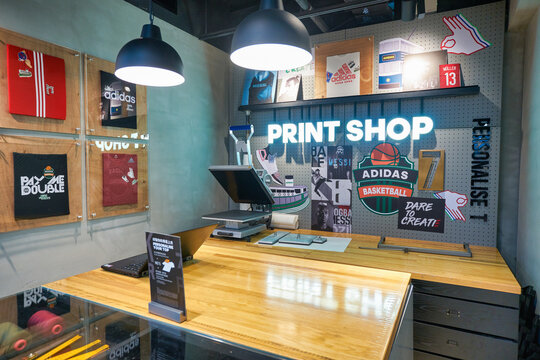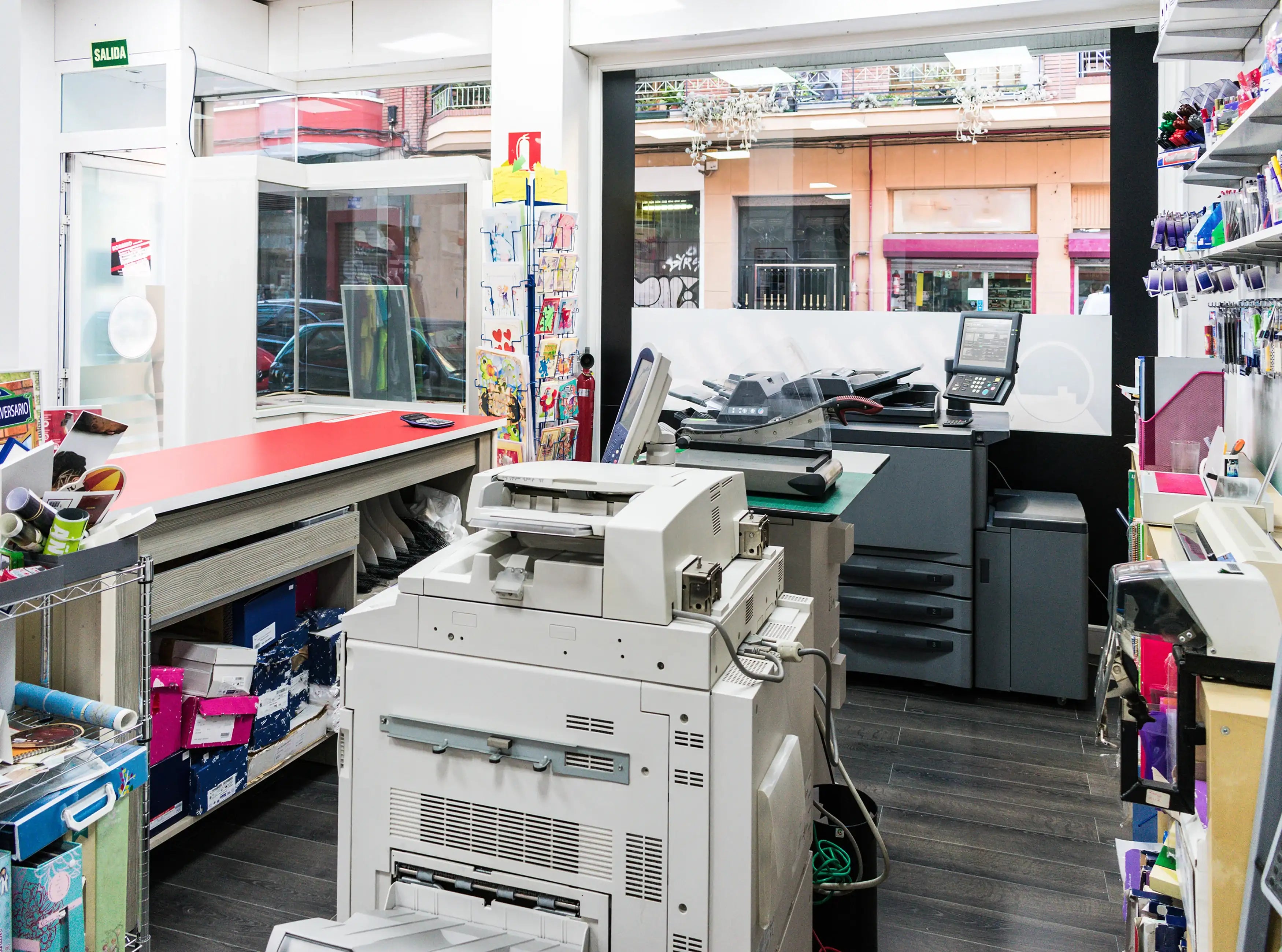The Ultimate Guide to Using Printing Services for Personalized Art Prints
Steering with the world of personalized art prints calls for a clear understanding of different printing services. Artists must consider elements such as printing strategies and materials to accomplish the preferred end result. Each decision, from art work prep work to color calibration, plays a crucial function in the final product. As they explore these aspects, artists can reveal the possibility for their job to get in touch with target markets in a purposeful method. What actions can they take to assure their prints stick out?
Recognizing Various Types of Printing Services
Although several people may ignore the ins and outs of printing solutions, recognizing the various types available is vital for any person wanting to develop customized art prints. One of the most usual types include digital printing, counter printing, and display printing. Digital printing is preferred for its fast turn-around and capacity to create top notch images directly from digital documents, making it ideal for little runs. On the other hand, balanced out printing deals remarkable picture high quality and is cost-efficient for larger amounts, utilizing plates to move ink onto paper. Screen printing, typically used for fabrics and advertising products, entails pushing ink via a mesh screen, enabling vibrant shades and appearances. Each method has its unique advantages and restrictions, making it crucial for artists and developers to evaluate their particular requirements, such as quantity, preferred quality, and budget, prior to selecting a printing solution that aligns with their artistic vision.
Choosing the Right Materials for Your Prints
Choosing the suitable products is essential for accomplishing premium custom-made art prints. Recognizing the numerous kinds of paper and the significance of ink high quality can considerably affect the outcome. Musicians have to think about these variables to guarantee their vision is properly represented in the published item.
Paper Kind Explained
Picking the right paper type is essential for achieving the desired visual and resilience in custom-made art prints. Numerous alternatives exist, each offering distinctive features. Shiny paper enhances shade vibrancy and detail, making it perfect for digital photography prints. Alternatively, matte paper supplies a softer coating, which is more suitable for art work that requires subtlety and texture. Art paper, frequently made from cotton or alpha cellulose, supplies historical high quality and is suitable for reproducing elaborate information in paintings (Print Shop Near Me). Additionally, specialized papers, such as watercolor or canvas, can add unique aesthetic results. Ultimately, picking the proper paper type will substantially affect the last presentation, making certain that the artwork is both lasting and aesthetically attractive
Ink Quality Issues
Ink high quality plays a crucial role in the total success of customized art prints. Premium inks guarantee vibrant colors, sharp details, and durability, which are important for showcasing imaginative job. When picking printing solutions, artists should consider pigment-based inks over dye-based alternatives, as they offer much better discolor resistance and color security. Furthermore, the choice of ink should enhance the picked paper kind, enhancing the print's aesthetic effect. Ecological variables, such as moisture and temperature level, can also influence ink efficiency; therefore, musicians must make inquiries regarding ink formulas that resist these elements. Inevitably, purchasing superior ink high quality can boost the end product, ensuring that the art print stays true to the artist's vision for years to find.
Discovering Printing Strategies: Digital vs. Typical
While both electronic and conventional printing strategies have their unique advantages, the decision on which technique to utilize commonly rests on the particular requirements of the art work. Digital printing stands out in adaptability and rate, enabling quick turnaround times and the capability to publish as needed. This technique is especially advantageous for artists who need unique pieces or little runs, as it gets rid of the need for considerable arrangement processes.Conversely, traditional printing strategies, such as lithography and display printing, frequently generate richer shades and structures, interesting artists seeking an extra responsive and genuine surface. These techniques can enhance the deepness and top quality of the art work, making them ideal for larger versions. Additionally, conventional methods may provide a distinctive aesthetic that digital printing sometimes has a hard time to duplicate. Ultimately, the selection in between these strategies must take into consideration factors like preferred top quality, quantity, and imaginative intent, leading musicians to one of the most ideal choice for their projects.

Preparing Your Artwork for Printing
Effectively preparing artwork for printing calls for careful attention to detail, no matter of the picked printing strategy. Musicians need to guarantee that their files are produced at the proper resolution, normally 300 DPI, to preserve intensity and clearness. The right color setting, normally CMYK for print, is vital to attain the wanted shade accuracy. Musicians should additionally consider the dimensions of the artwork, making certain to include hemorrhage locations if required, to stop any kind of undesirable white edges after trimming.Additionally, file styles play an important role; TIFF and PDF are typically chosen for top notch prints. Prior to entry, it is essential to examine the Learn More Here artwork for any flaws or undesirable aspects. By thoroughly inspecting these elements, musicians can boost the chance of their prints lining up with their creative vision, ultimately resulting in an effective printing result.
The Relevance of Color Calibration and Proofing
Color calibration and proofing are important actions in the printing procedure, as they guarantee that the final output accurately mirrors the musician's vision. Correct shade calibration warranties that the colors presented on the display suit those that will certainly be printed. This procedure includes adjusting the display settings, printer accounts, and inks to achieve a regular color representation.Additionally, proofing permits artists to sneak peek their work prior to the final print run. This phase enables them to detect and remedy any disparities in color, information, or saturation, thereby decreasing costly mistakes. By using hard-copy or electronic proofs, musicians can make informed decisions concerning adjustments needed for perfect results.Incorporating shade calibration and proofing into the printing process not only improves the top quality of the end product however additionally promotes a trustworthy partnership in between the artist and the printing solution, ensuring complete satisfaction and integrity to the original artwork.
Choosing the Perfect Dimension and Format for Your Prints

Advertising and marketing and Selling Your Personalized Art Prints
Advertising and selling custom-made art prints requires a solid brand identity to attract attention in an open market. Effective on-line promotion methods and the strategic usage of social media sites platforms can substantially enhance exposure and involvement. By incorporating these elements, artists can develop an engaging presence that brings in potential purchasers.
Structure Your Brand Name Identity
Establishing a strong brand name identification is necessary for musicians looking to effectively market and sell their customized art prints. This identification incorporates the musician's unique style, worths, and tale, which reverberate with possible buyers. Artists ought to develop a natural aesthetic visibility throughout all systems, including logos, color pattern, and typography that show their imaginative vision. In addition, a clear goal declaration aids connect the musician's function and interest. Involving narration concerning the motivation behind each item can promote psychological links with the target market. Consistency in messaging, whether on social media sites or product packaging, enhances recognition and trust. By read review carefully curating their brand name identification, musicians can separate themselves in an affordable market, bring in faithful clients that value their virtuosity.
Reliable Online Promotion Methods
What methods can musicians utilize to successfully promote their customized art prints online? First, creating an expert web site showcasing the art work is necessary. This site needs to consist of high-grade pictures and comprehensive descriptions to involve prospective buyers. Furthermore, artists can utilize e-mail marketing by constructing a customer listing to share updates, promotions, and brand-new releases. Teaming up with blog writers and influencers in the art area can increase reach and integrity. Providing exclusive items or limited-time discount rates can additionally produce necessity, encouraging purchases. Maximizing web content for search engines with pertinent keyword phrases will certainly improve exposure. Maintaining a blog about the creative procedure can attract art lovers, cultivating a much deeper connection with the audience and enhancing the general advertising and marketing strategy.
Using Social Media Site Operatings Systems
Social media platforms act as powerful tools for artists wanting to market and sell their custom-made art prints. By leveraging systems like Instagram, Facebook, and Pinterest, musicians can display their job to a huge target market. Involving visuals and strategic hashtags can increase visibility, drawing potential buyers to their profiles. Consistently uploading web content, such as behind-the-scenes procedures or brand-new layouts, helps maintain audience passion and cultivates a feeling of community. Furthermore, artists can utilize targeted advertising to reach details demographics, boosting the chances of sales. Collaborations with influencers or various other artists can better magnify exposure. Ultimately, a well-curated social media sites visibility not just advertises custom-made art prints however also builds a devoted consumer base over time.
Often Asked Questions

Exactly how Do I Discover Reputable Printing Service Providers?
To find reputable printing provider, one ought to research on-line evaluations, see seek referrals from peers, contrast portfolios, request examples, and examine customer support responsiveness. This extensive method assurances notified choices and sufficient outcomes.
What Is the Typical Turn-around Time for Personalized Prints?
The regular turnaround time for personalized prints varies by provider, but generally ranges from a couple of days to two weeks. Aspects influencing this include order size, complexity, and the particular printing methods made use of.
Can I Get a Refund if I'm Not Pleased With My Prints?
The concern of acquiring a refund for unsatisfactory prints typically depends upon the specific printing service's plans. Many firms provide contentment assurances, while others might have rigorous return problems, stressing the significance of examining terms ahead of time.
Are There Any Hidden Expenses Connected With Printing Solutions?
Lots of printing solutions may include surprise prices such as arrangement costs, shipping charges, or additional fees for particular products. It's vital for consumers to ask about all prospective costs before finalizing their order.
How Can I Guarantee My Prints Are Eco-friendly?
To guarantee prints are environmentally friendly, one should select environment-friendly inks, recycled paper, and sustainable printing practices. Researching printing solutions that focus on sustainability and acquiring accreditations can even more assure marginal ecological impact in the printing process. Guiding with the world of custom art prints calls for a clear understanding of different printing services. Many individuals might overlook the ins and outs of printing solutions, comprehending the various kinds offered is important for anyone looking to develop customized art prints. The most common kinds include electronic printing, offset printing, and display printing. Successfully preparing art work for printing needs careful attention to detail, regardless of the chosen printing method. Prints aimed at galleries may require conventional sizes to help with framing, whereas distinct layouts may appeal to enthusiasts looking for something distinctive.Lastly, the printing solution's capacities need to be assessed.